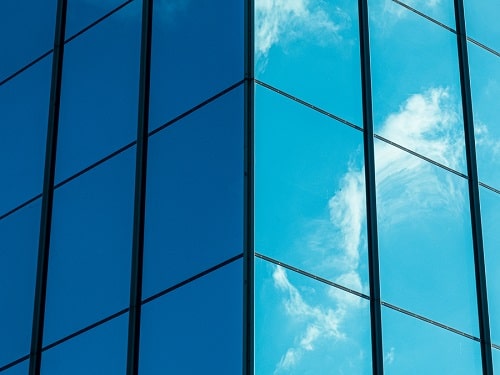Scientists from Kyung Hee University in Seoul have developed a clear window film that can cool the inside of building, thereby reducing the energy consumption from air conditioning in hot cities.
Why?
Cooling buildings in hot countries e.g., using electric-powered air conditioning units accounts for around 15 per cent of global energy consumption and air conditioning accounts one fifth of the total electricity used in buildings around the world. This figure looks set to rise as temperatures increase because of global warming. Alternative, eco-friendly cooling technologies are, therefore, urgently needed to reduce the use of refrigerants that waste electricity and contribute to atmospheric pollution.
Deflects UV and Near-Infrared Rays
The transparent film deflects ultraviolet and near-infrared rays in sunlight, the main factors that increase the indoor temperature, away from the window while still transmitting visible light into the room.
The resulting benefits of the film’s selective reflecting properties are:
– Through preventing warm air from entering a building through the windows in the first place, the film reduces the energy used to cool indoor spaces (using electric air conditioning units) by 31 per cent without requiring a single watt of energy itself. This not only has the potential to save money but also help reduce carbon emissions thereby helping to reduce global warming and meet environmental targets.
– The super-thin layers which make up the film are made from common materials, thereby reducing the cost and the environmental impact of its manufacture, and making it possible to manufacture on a large scale for practical applications.
Quantum Computing Used To Design It
The university researchers developed a machine learning-quantum computing algorithm to design the transparent radiative film structure. The algorithm extracted information for quantum computing from a database of simulations related to optical properties. The resulting information was used to decide which materials would work best for each layer and how thick each layer should be, thereby creating an optimised film structure. The finished film design was found to be able to beat the performance of conventionally designed TRCs and one of the best commercial heat-reduction glasses on the market.
What Does This Mean For Your Organisation?
With traditional electric-powered air conditioning producing so many greenhouse gasses, and with rising global temperatures set to increase demand for cooling, exacerbating the situation, it’s clear to see why there’s such a need for alternative, more eco-friendly cooling systems. This could provide many new business opportunities, even in the UK where demand for air con looks alike rising due to recent heatwave summers. One particularly interesting aspect of the design of this film is how the use of quantum computing was able to save time in its development and create a very effective product. As well as introducing quantum computing to optics, it shows how it could be applied to many other industries to quickly create effective, innovative, and potentially important solutions to many challenges that have proven too difficult to date and would take much longer to tackle without the help of some serious computing power.




